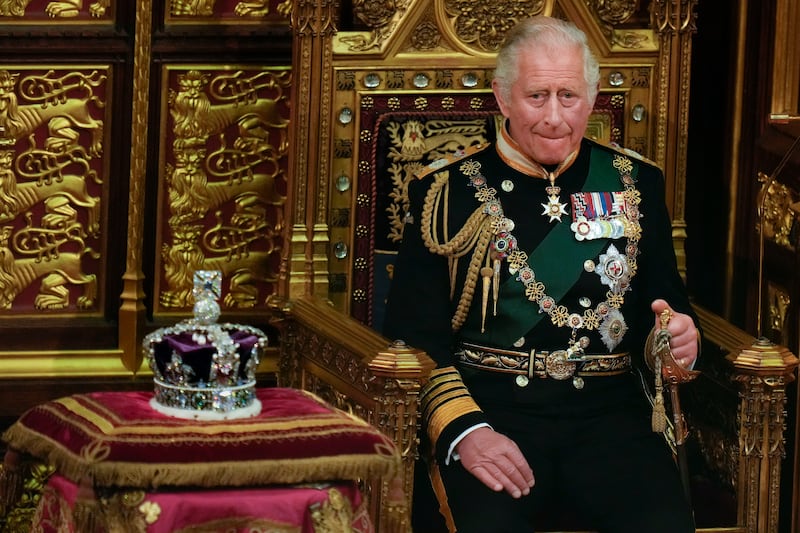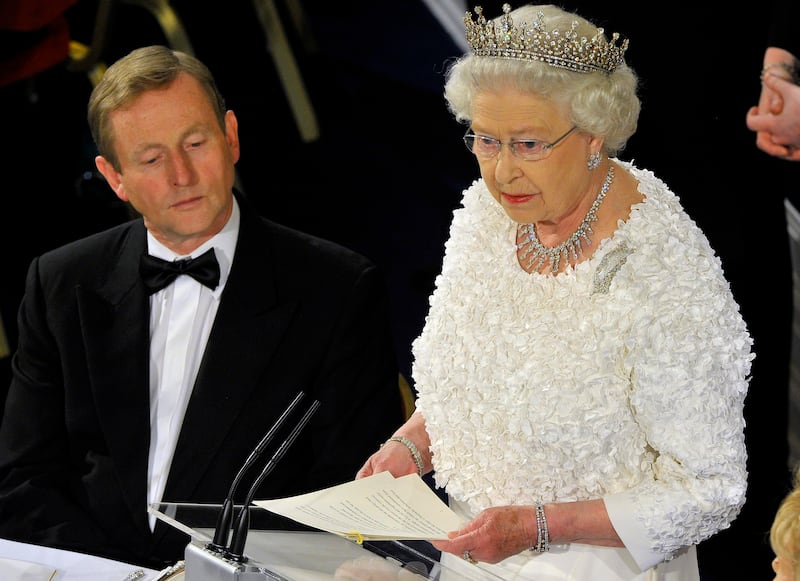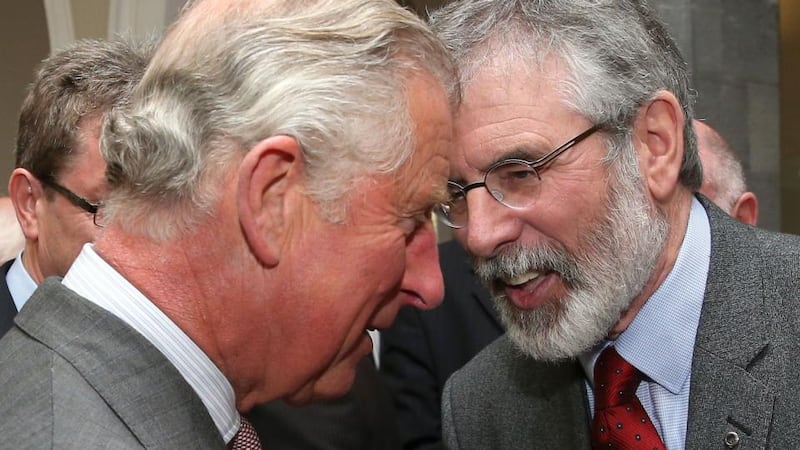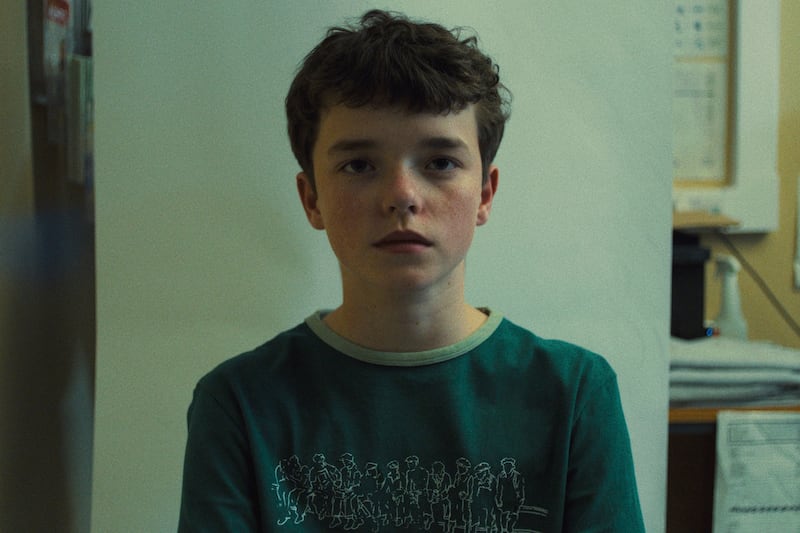July 1st, 1969. The nuns usher me and my classmates into the gym of our Oxford primary school to watch a black-and-white TV showing images of a gawky 20-year-old Charles Windsor being handed a sword, coronet and luxuriant velvet mantle from his mother, signifying his official investiture as Prince of Wales. As an eight-year-old at the time, I have only a hazy memory of the details. But from my vantage point of a hard wooden bench, I recall being struck by the medieval magnificence of Caernafon Castle and Charles’ flowery pledge to become the queen’s “liegeman of life and limb”, which made the pomp and circumstance look, to my childish eyes, like something from the Arthurian Knights of the Round Table or Robin Hood.
Like Charles himself, I suspect, I had no idea it would be more than 50 years before he would finally get to change his title to King. It has been the longest royal apprenticeship in British history and, inevitably, the reign of 73-year-old Charles III is not going to be anything like as long as his mother’s. For months to come the phrase “God Save The King”, as proclaimed by new British prime minister Liz Truss outside Downing Street on Friday, will still sound peculiar. Whenever English athletes or Northern Irish football players sang their national anthem it has always been a prayer for their “gracious queen”. The new words to the anthem, like new stamps or new currency, will take some getting used to.

The worldwide fame Queen Elizabeth enjoyed was due in no small part to the length of her tenure, spanning 15 British prime ministers, and giving the monarch time to become ever more confident in the discharge of her responsibilities. Her pandemic message promising Britons that “we’ll meet again” skilfully played on that sense of continuity, using the lyrics of the second World War Vera Lynn tune to emphasise the queen’s role as a human bridge back to past days of grit and endurance overcoming adversity. Tony Blair dubbed the queen not just a monarch but “the matriarch of our nation”. Figures as disparate as the Alliance Party leader Naomi Long and the Rolling Stones’ Mick Jagger reached for the image of the queen as a spiritual grandmother. Charles is a grandad, but he may simply not get the time to enter the British consciousness as a national patriarch.
[ How the world and UK papers reacted to the death of Queen Elizabeth ]
The late queen was always deft in saying very little or, when she did speak out, using language judiciously. Think how much was read into her brief comment that voters in the 2014 Scottish independence referendum should “think very carefully about the future”. King Charles will no doubt seek to follow his mother’s example, but he has a track record of volubility on many subjects – from architecture to climate change, conservation to alternative medicine. That makes it harder for him to replicate the sense of mystery and ambiguity that was always attached to the question: “What does the queen really think?”

Then there’s the contrast between the queen’s long marriage and Charles’ well-documented turbulent personal life. Water under the royal bridge for some, but a troubled history which means a section of the new king’s subjects will never put Charles III on the same pedestal they accorded Elizabeth II.
Notwithstanding all of that, polling carried out by YouGov at the time of the platinum jubilee suggests the majority of the British public are prepared to give Charles the benefit of the doubt: 62 per cent indicated they wanted the monarchy to continue, with 22 per cent favouring an elected president. However, the same survey also contained warning signs, with younger people less supportive of the monarchy and greater approval ratings for both the queen and Prince William than those garnered by Charles.
[ The Irish Times view on Queen Elizabeth II: the illusion of permanence ]
These attitudes, coupled with concerns about the behaviour of the wider royal family – particularly Prince Andrew – may convince the new king that a smaller, more cost-efficient monarchy is necessary if the Buckingham Palace “firm” is to survive into the latter decades of the 21st century.
Just as no one could have predicted all the challenges queen would face when she acceded to the British throne in 1952, it’s impossible to know exactly which events will become associated in the public imagination with the reign of Charles. The era begins inauspiciously alongside war in Europe and economic upheaval. With both a fresh Scottish independence vote and a future Northern Ireland Border poll as potential prospects, how united Charles’ kingdom will remain is difficult to predict.
Truss referred to the monarchy as the rock on which the UK is built, and both the new king and his late mother have one particular Irish rock in common – Cashel in Tipperary, which Charles and Camilla visited in March this year, deliberately walking in the footsteps of the queen who made the same trip in 2011. Whilst visits by the queen to Northern Ireland had been relatively commonplace down the years, that 2011 visit to the Republic broke new ground, providing remarkable images like that of the queen and then president Mary McAleese laying wreaths to the 1916 rebels at Dublin’s Garden of Remembrance.
McAleese, speaking to BBC Radio Ulster after the queen’s death, described her four-day visit to Ireland as “magical”, a “pilgrimage of sorts” and “a mission of forgiveness”. Besides the trip to the Rock of Cashel, there was the warm reception the queen got from the public during her walkabout in Cork’s English market and the presidential “wow” which accompanied the British monarch beginning her Dublin Castle speech with the Irish phrase ”A hUachtaráin agus a chairde [president and friends]”.

In that speech, the queen talked about how she, like others, had suffered personally, but urged everyone to learn “the importance of forbearance and conciliation, of being able to bow to the past but not be bound by it”. It was by common consent a finely wrought address, warmly received by her audience, providing Seamus Heaney with reason to raise his glass “to toast the queen”. It set the scene for the next year’s historic handshake with Martin McGuinness at the Lyric Theatre in Belfast.
When it comes to the British monarchy’s role in fostering Anglo-Irish relations, it’s safe to assume Charles will want to build on the queen’s impressive diplomatic pedigree. Like his mother, Charles was sorely hurt by the 1979 IRA killing of Lord Mountbatten but viewed the advent of the peace process as an opportunity to build bridges. He has echoed her calls for forbearance and conciliation and made a point of meeting Irish politicians from across the spectrum, including shaking hands with Gerry Adams and Martin McGuinness.

Seen from the current era of fraught post-Brexit exchanges between London and Dublin, 2011 and 2012 feel a little like a lost golden age. However, McAleese is convinced Charles will, like his mother, rise above the ordinary political cut and thrust. “In recent times,” she told the BBC, “at the political level things have not been quite so straightforward. But she transcended that and I believe that king will also continue to transcend that and build good neighbourliness. He loves Ireland, he comes here quite frequently, he’s always made welcome and will indeed be a very welcome visitor again.”
But filling the shoes of the sure-footed Queen Elizabeth II will be a hard task for her eldest son to accomplish.

















